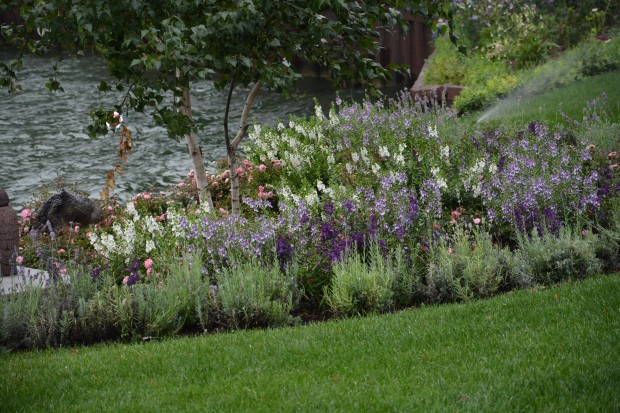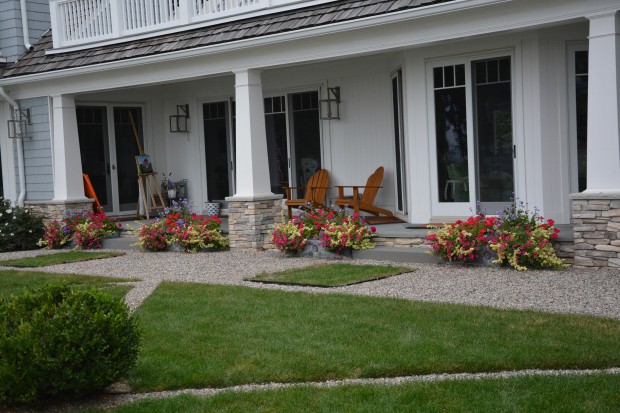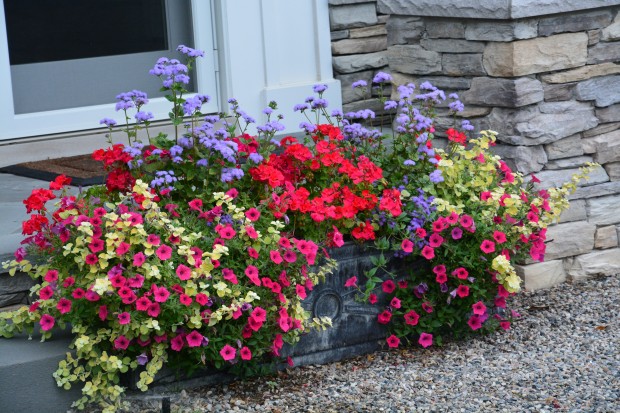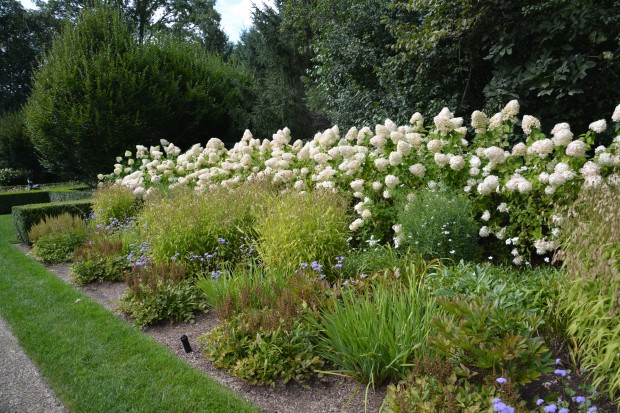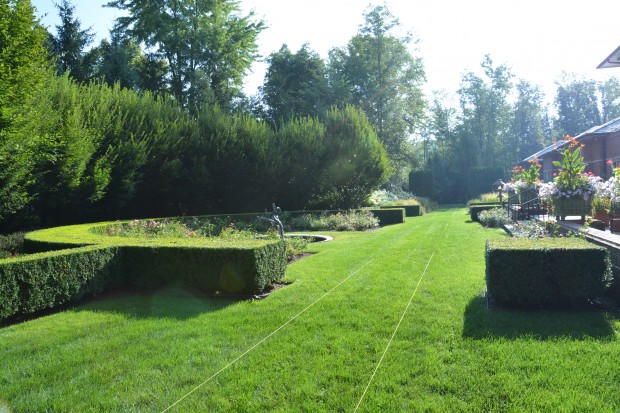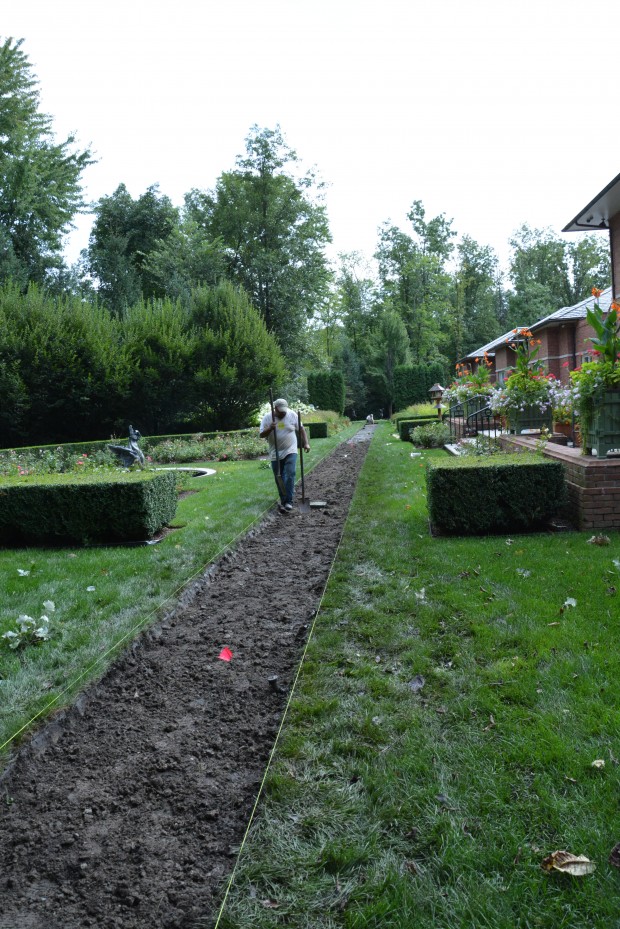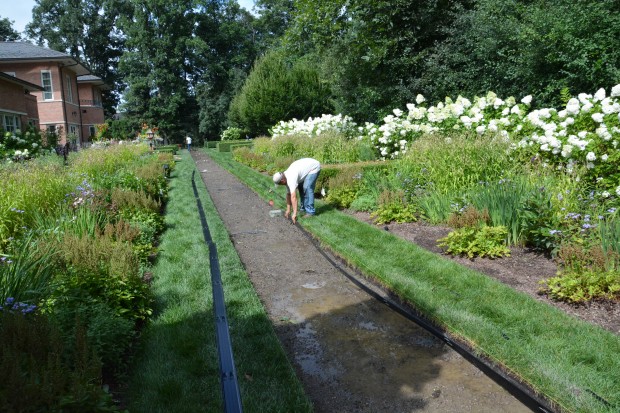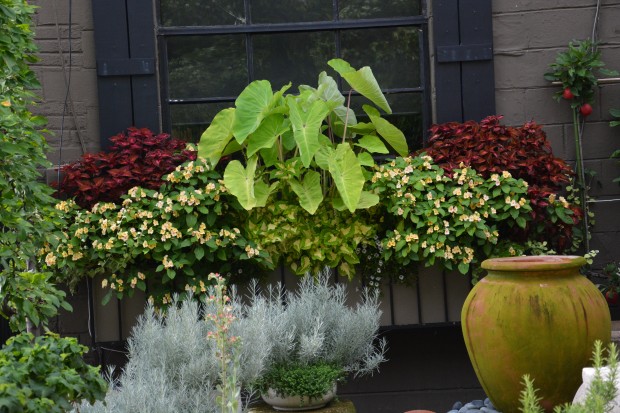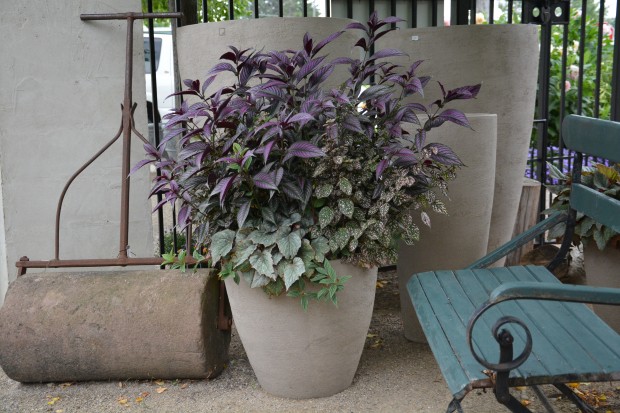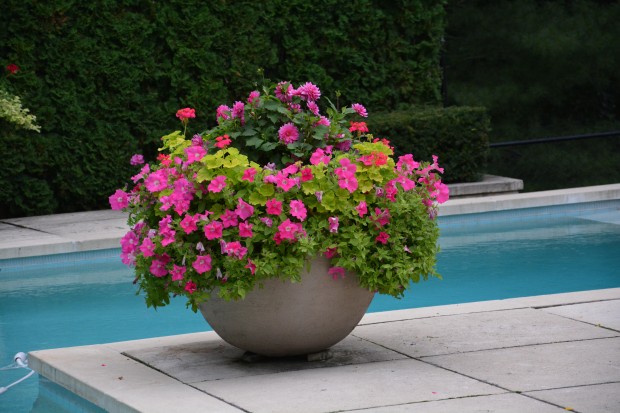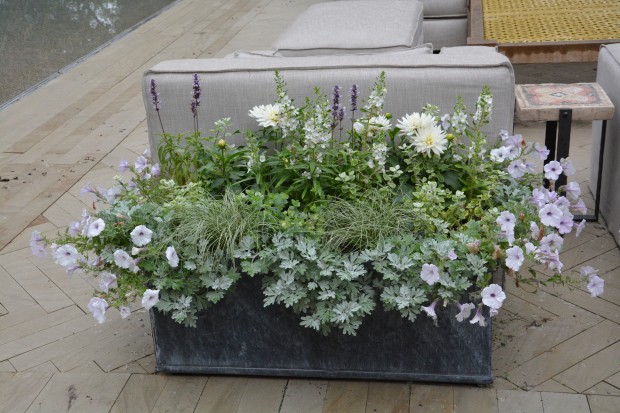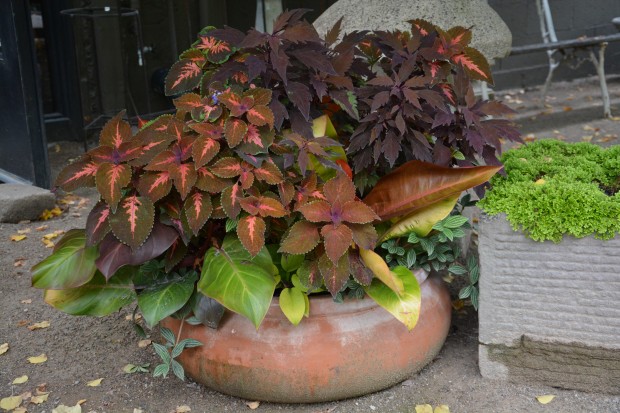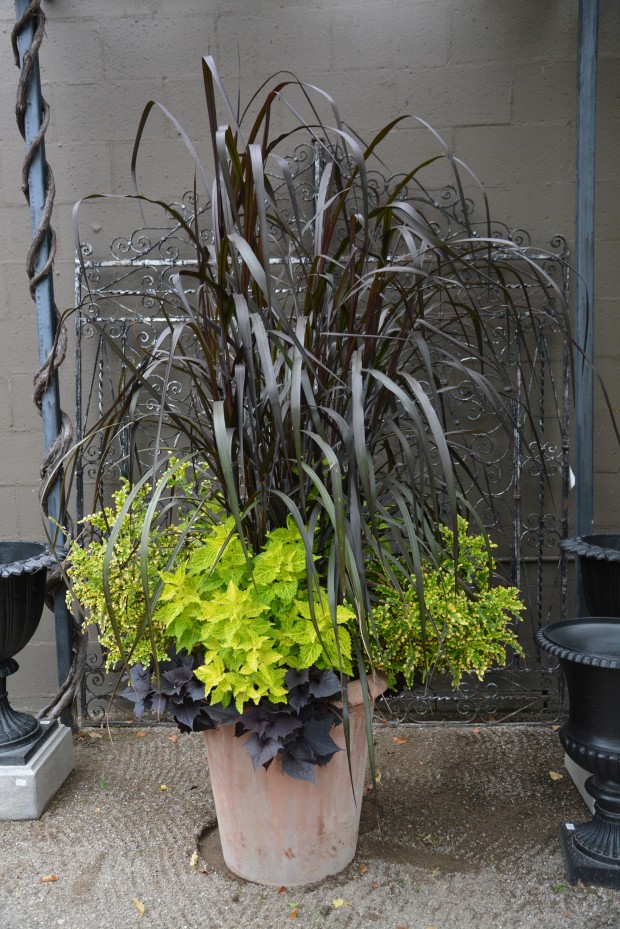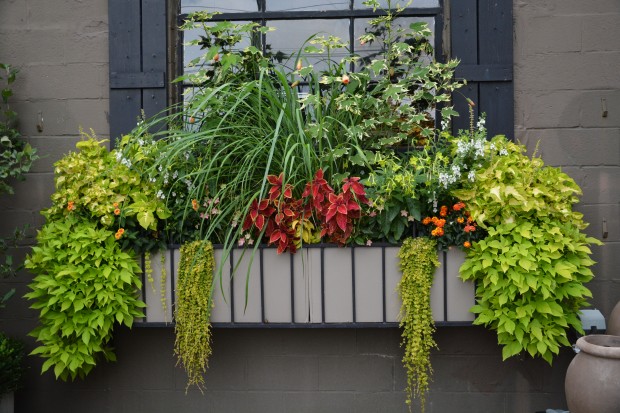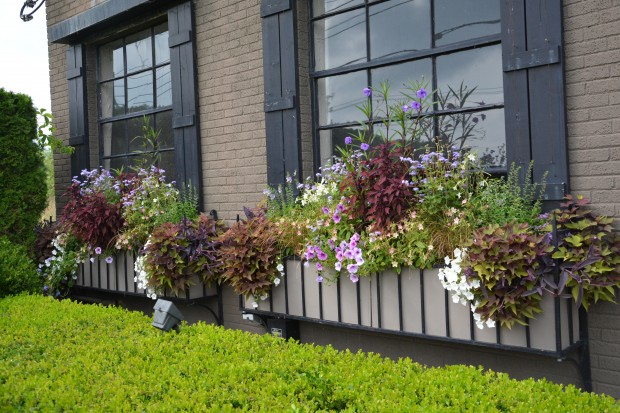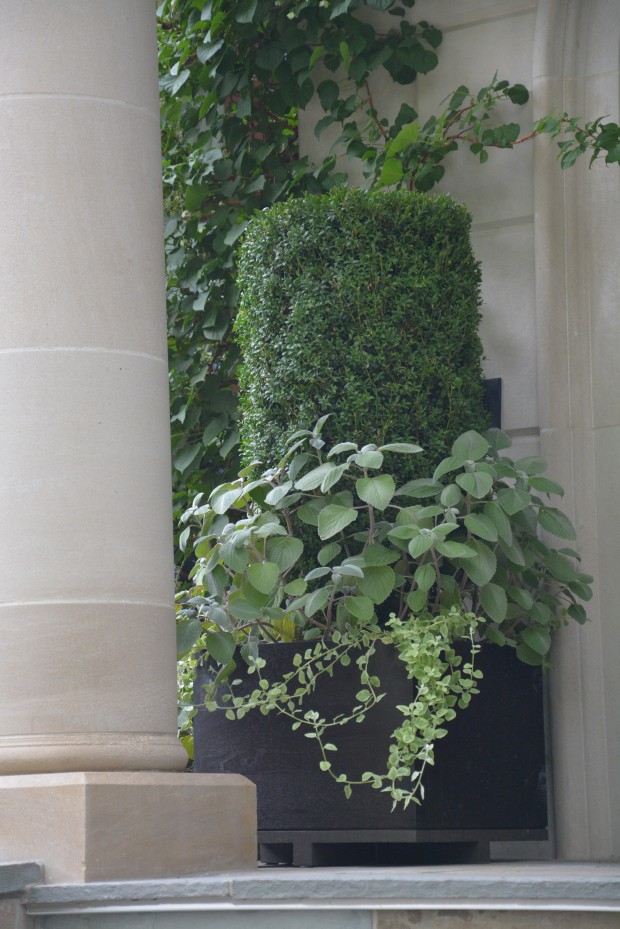 It isn’t hard to identify the favorite clients. The work you do for them-they appreciate it. They are not afraid to ask you to detail every step you went through to arrive at a recommendation. Once you provide all of the details, they respond, kindly. They think over everything you say, carefully. Better, yet, they are interested, and committed. They are clear about what they like, and polite about what they don’t like. They are willing to weather any storm. They can be persuaded. But they know their own mind and life, and are not afraid to stand up for that. I don’t often visit this client, for whom I did a landscape for her new house some three years ago. We had cause to meet recently-a few new issues needed solving. Her opening topic-a leaf that had fallen from her katsura espaliers. That heart shape leaf falling on an under planting of boxwood-a cause for celebration. That randomly falling heart shaped leaf was the first topic of her day. The beauty of nature was number one. All else was a distant second. How like her, to feel this way, and show it to me. We spent a few moments, in celebration.
It isn’t hard to identify the favorite clients. The work you do for them-they appreciate it. They are not afraid to ask you to detail every step you went through to arrive at a recommendation. Once you provide all of the details, they respond, kindly. They think over everything you say, carefully. Better, yet, they are interested, and committed. They are clear about what they like, and polite about what they don’t like. They are willing to weather any storm. They can be persuaded. But they know their own mind and life, and are not afraid to stand up for that. I don’t often visit this client, for whom I did a landscape for her new house some three years ago. We had cause to meet recently-a few new issues needed solving. Her opening topic-a leaf that had fallen from her katsura espaliers. That heart shape leaf falling on an under planting of boxwood-a cause for celebration. That randomly falling heart shaped leaf was the first topic of her day. The beauty of nature was number one. All else was a distant second. How like her, to feel this way, and show it to me. We spent a few moments, in celebration.
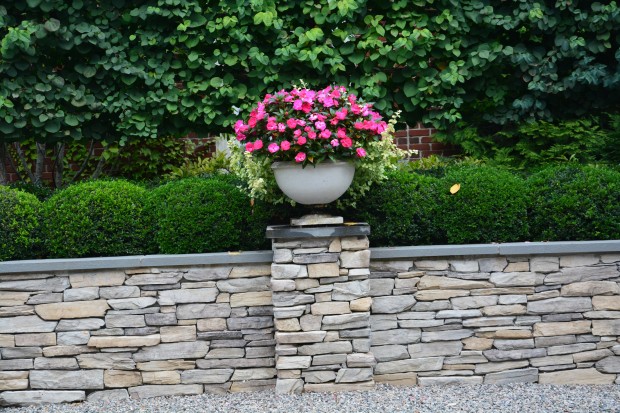 Celebration energizes and organizes all sorts of expression. The landscape is, in its most basic form, about defining spaces, directing traffic, and nurturing a love of nature. As much as a home is a three dimensional representation of the story of the life of a family, the landscape is a story about how that home interacts with nature. That relationship with nature is about a lot of things – materials impervious to weather, and the plants. The shapes of spaces, and their dimensions. Color, and dimension. Depth. Places to be. What grows and lives in the landscape parallels a life some describe as a life well worth living.
Celebration energizes and organizes all sorts of expression. The landscape is, in its most basic form, about defining spaces, directing traffic, and nurturing a love of nature. As much as a home is a three dimensional representation of the story of the life of a family, the landscape is a story about how that home interacts with nature. That relationship with nature is about a lot of things – materials impervious to weather, and the plants. The shapes of spaces, and their dimensions. Color, and dimension. Depth. Places to be. What grows and lives in the landscape parallels a life some describe as a life well worth living.
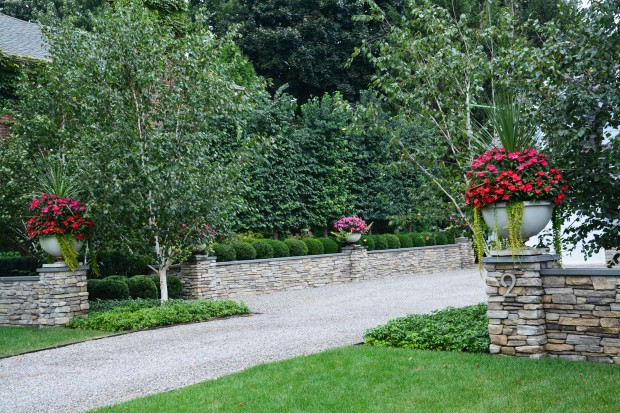 This landscape just three years old. It is starting to is take root, and become part and parcel of this property. It will take a few more years to see what the landscape screens, what it frames, what it features, how it thrives, and how it enriches this household. A mature landscape will take a good many years to achieve, but the early signs are good. Establishing the landscape has been a battle. Very heavy clay soil close to the water’s edge means the soil is usually saturated. We have had casualties. But the peonies have taken hold, as have the climbing roses and the clematis. Once a garden built on clay soil is established, it it long lived.
This landscape just three years old. It is starting to is take root, and become part and parcel of this property. It will take a few more years to see what the landscape screens, what it frames, what it features, how it thrives, and how it enriches this household. A mature landscape will take a good many years to achieve, but the early signs are good. Establishing the landscape has been a battle. Very heavy clay soil close to the water’s edge means the soil is usually saturated. We have had casualties. But the peonies have taken hold, as have the climbing roses and the clematis. Once a garden built on clay soil is established, it it long lived.
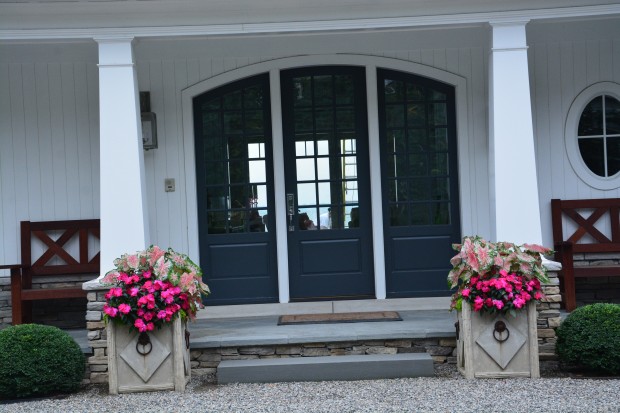 This favorite client took my recommendations about pots and benches, steps, porch stone-this was just the beginning.. This year she had a mind to change her color scheme for her containers. Lots of color, please. Container design can take a last minute cue.
This favorite client took my recommendations about pots and benches, steps, porch stone-this was just the beginning.. This year she had a mind to change her color scheme for her containers. Lots of color, please. Container design can take a last minute cue.
 A meadow garden near the water was too tall, and too green. Some of the beds got a subtle punch of color from the addition of mid height annual plants. We planted a few low growing shrub roses-just to see if they would take to the placement. Any successful garden depends upon the willingness to experiment, and evolve. Tinkering is is the hallmark of every inventor. Among that big group of inventors – gardeners.
A meadow garden near the water was too tall, and too green. Some of the beds got a subtle punch of color from the addition of mid height annual plants. We planted a few low growing shrub roses-just to see if they would take to the placement. Any successful garden depends upon the willingness to experiment, and evolve. Tinkering is is the hallmark of every inventor. Among that big group of inventors – gardeners.
 My client’s property is overrun with rabbits. Rabbits that treat her gardens like a lunch buffet. Her sculpture collection of minks, foxes and dogs that inhabit the landscape are a personal signature. She may never defeat the rabbits, but her landscape is endowed with with her hope, interest and commitment. She is a favorite client, yes. The relationship is a regular pleasure, and routinely full of surprises. She thinks about her landscape in a way that I never could. It is hers. I so appreciate that she thinks about every issue, personally.
My client’s property is overrun with rabbits. Rabbits that treat her gardens like a lunch buffet. Her sculpture collection of minks, foxes and dogs that inhabit the landscape are a personal signature. She may never defeat the rabbits, but her landscape is endowed with with her hope, interest and commitment. She is a favorite client, yes. The relationship is a regular pleasure, and routinely full of surprises. She thinks about her landscape in a way that I never could. It is hers. I so appreciate that she thinks about every issue, personally.
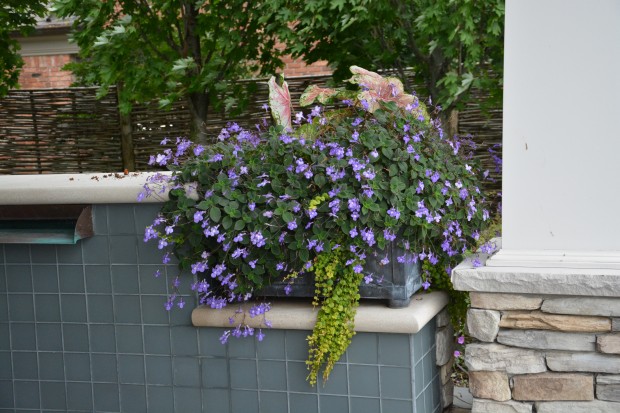 I have never seen streptocarpella thrive quite like this. Bravo, Harriet.
I have never seen streptocarpella thrive quite like this. Bravo, Harriet.
